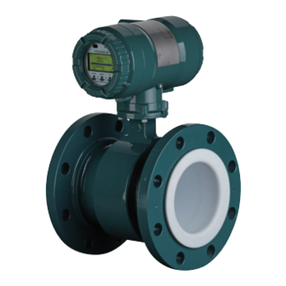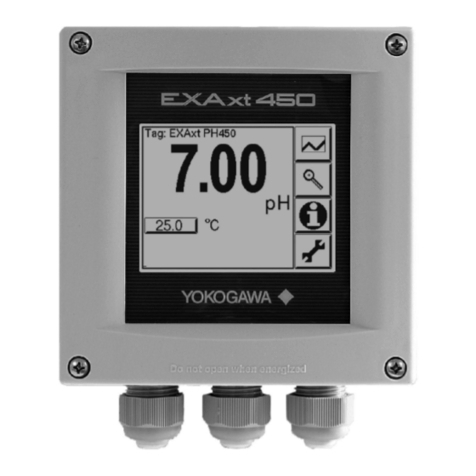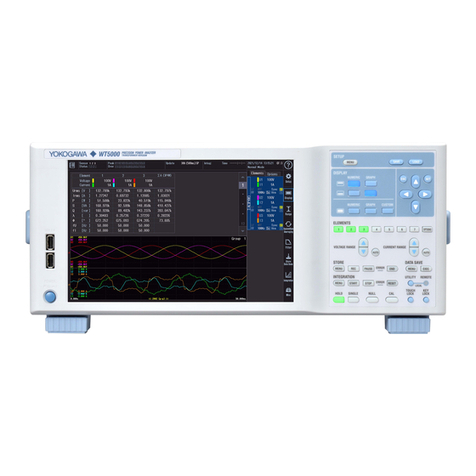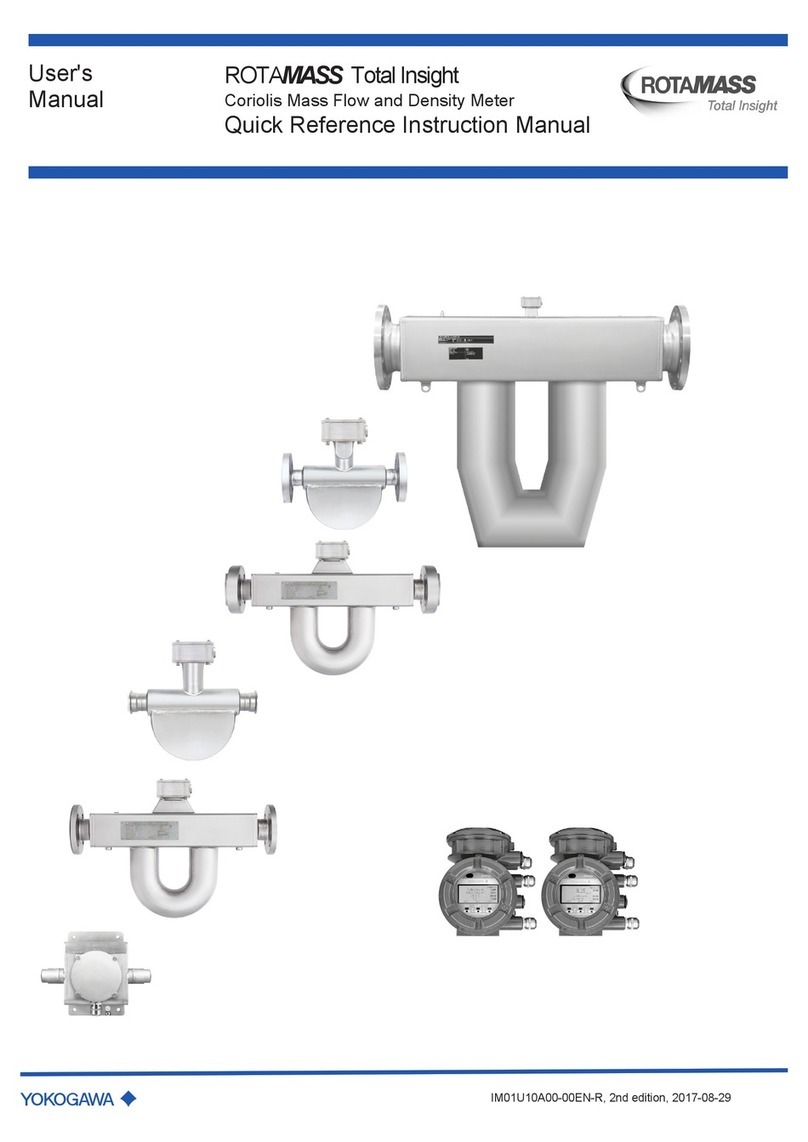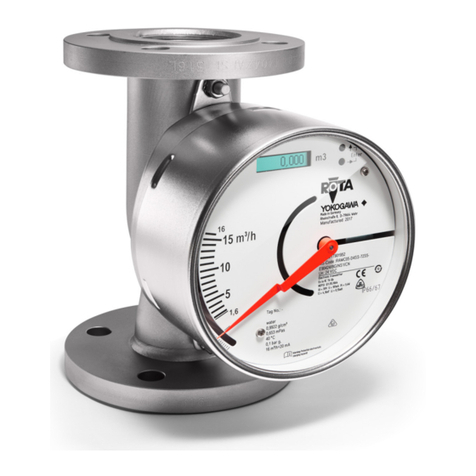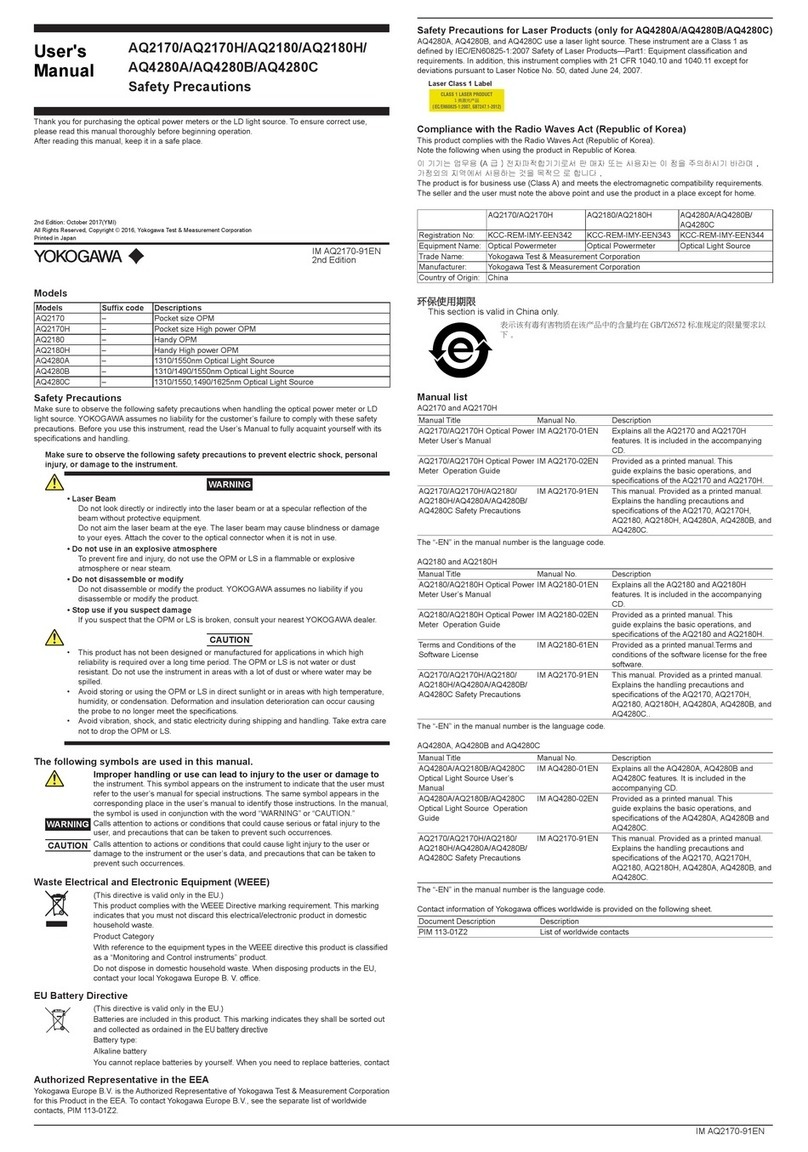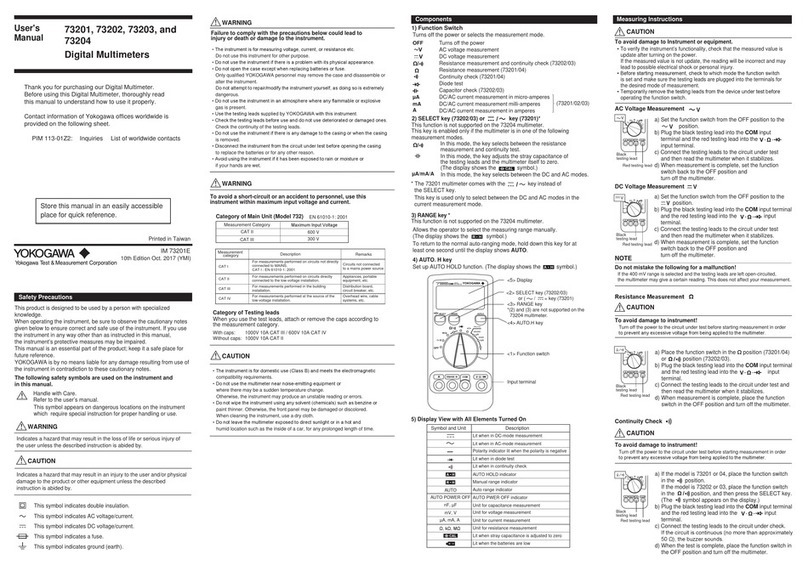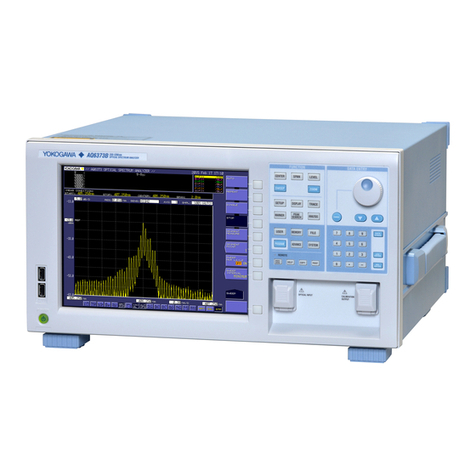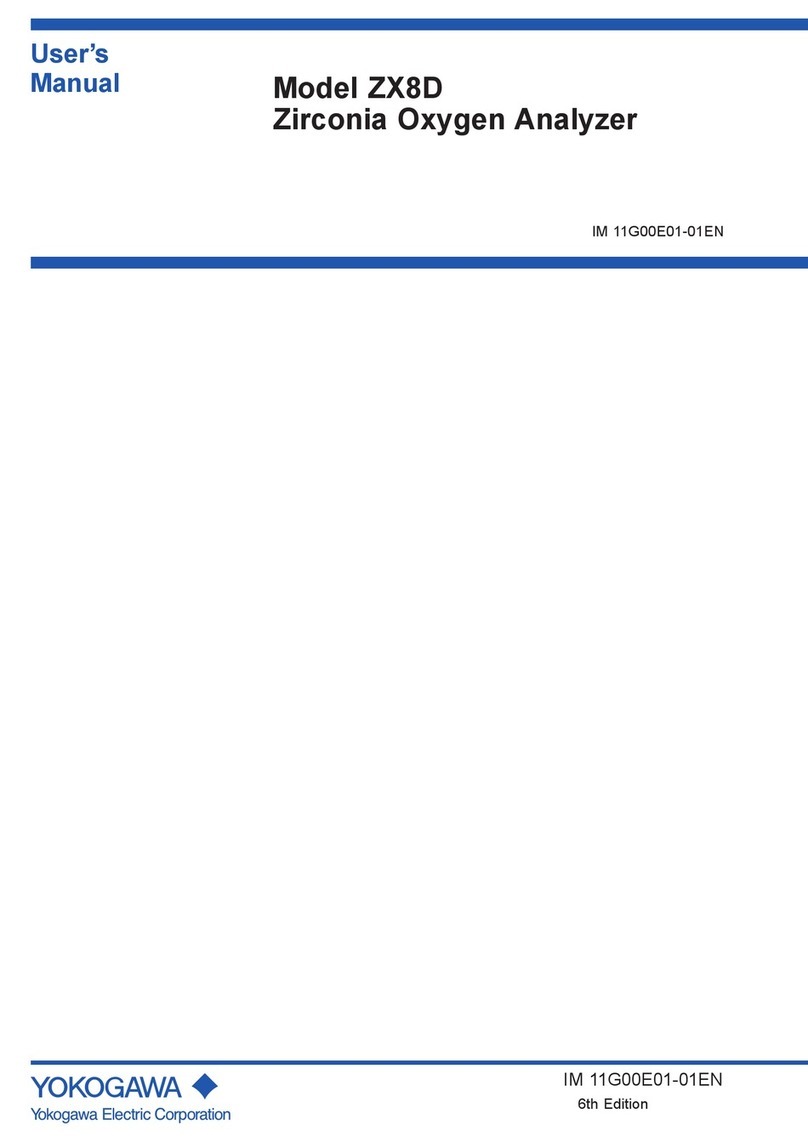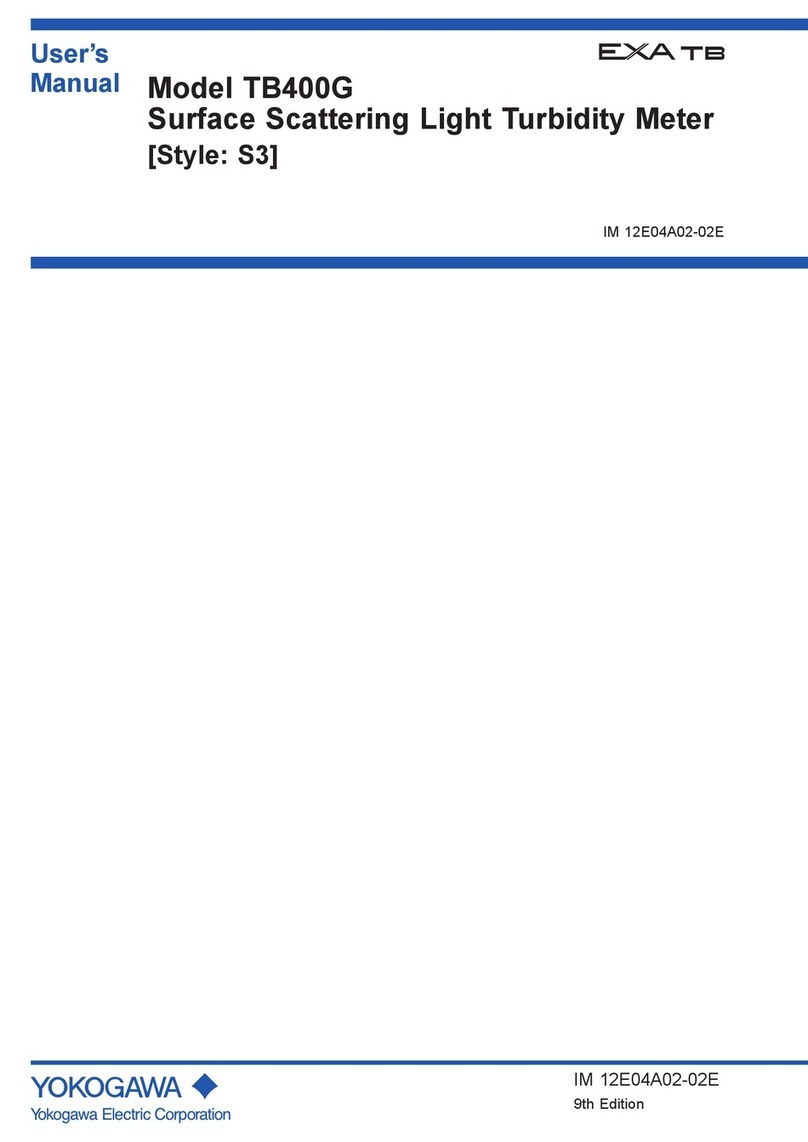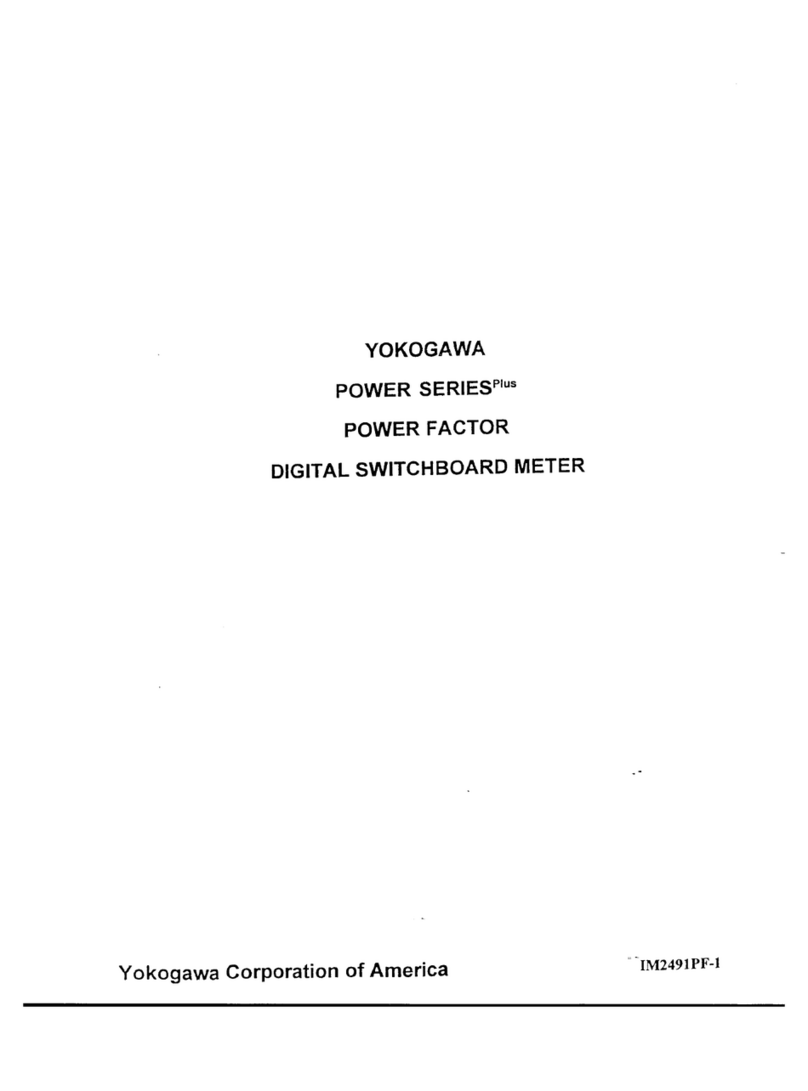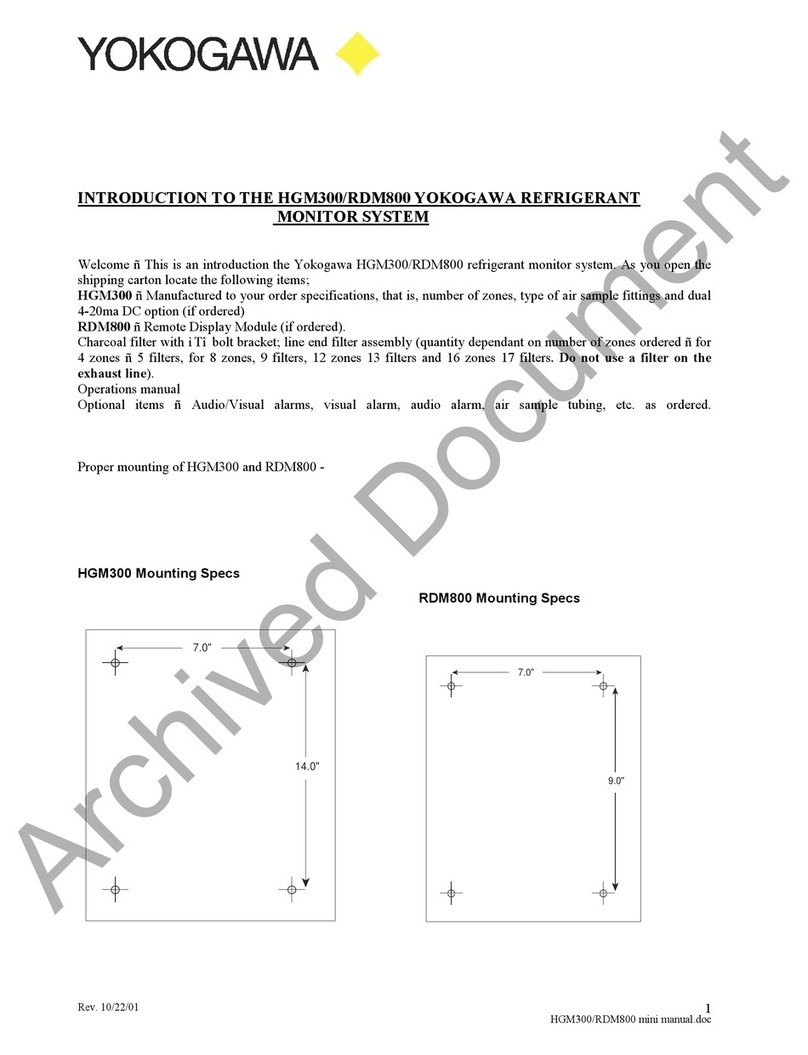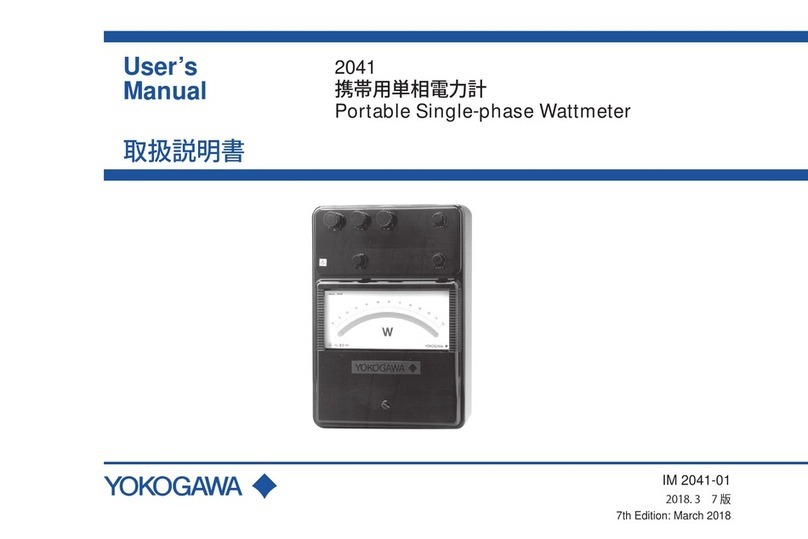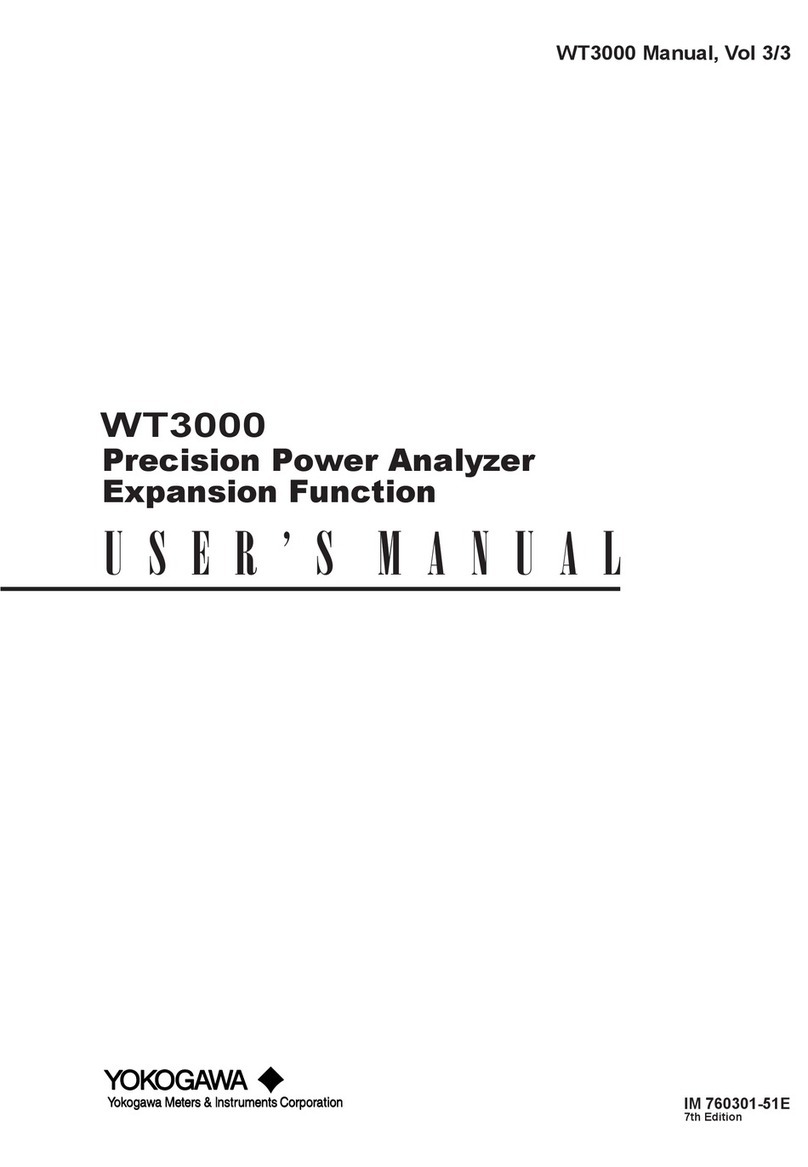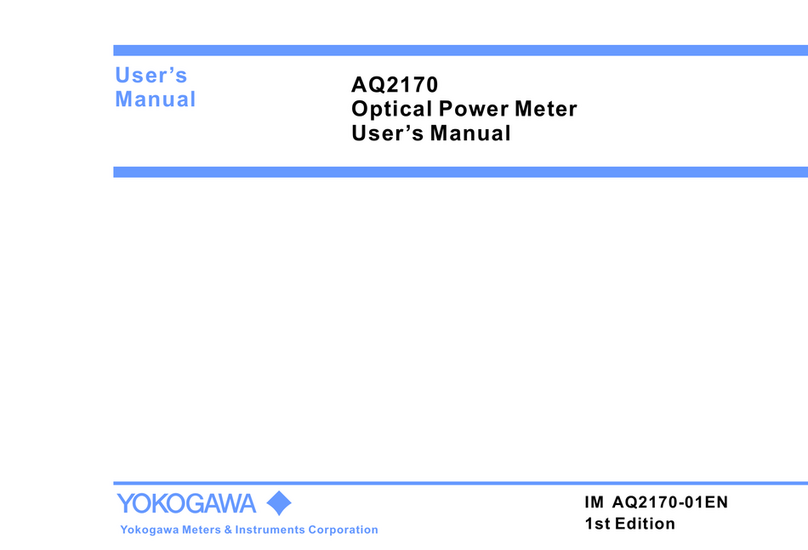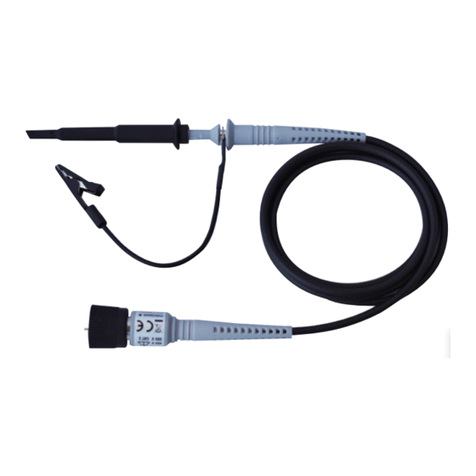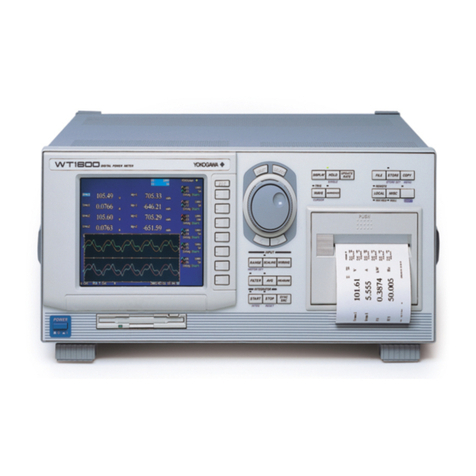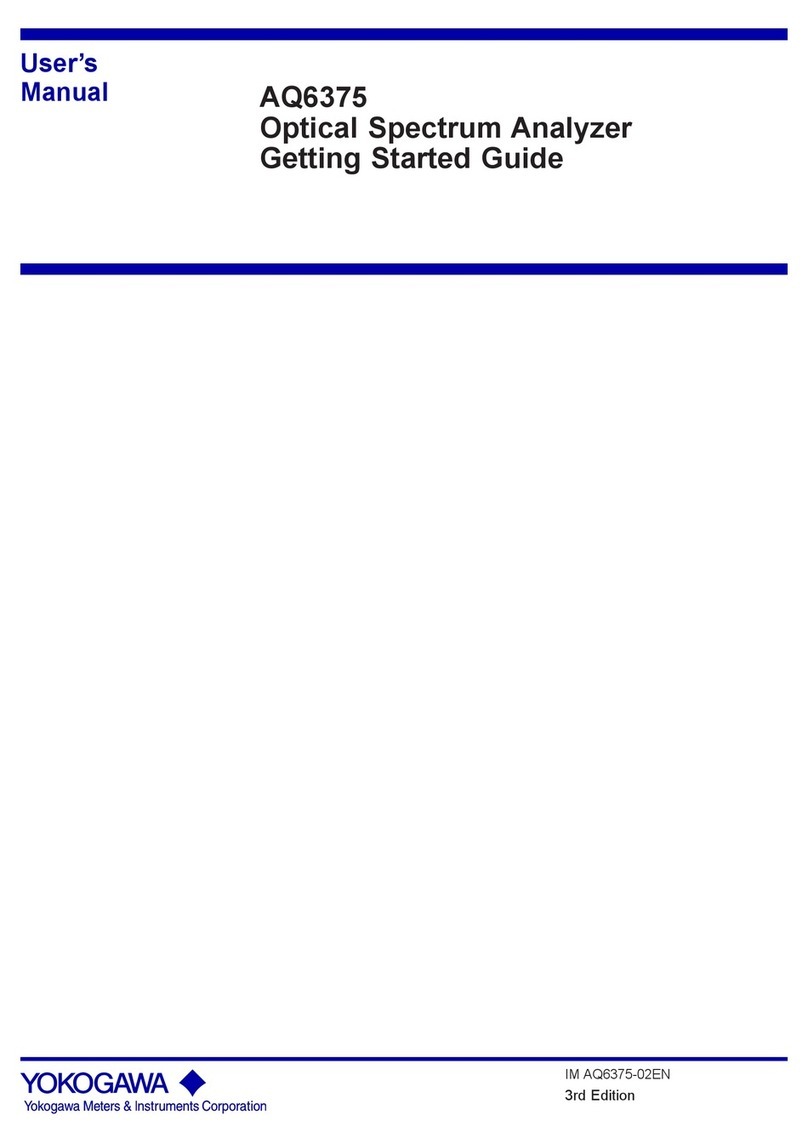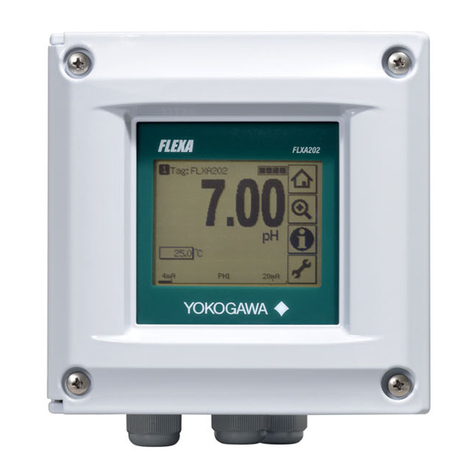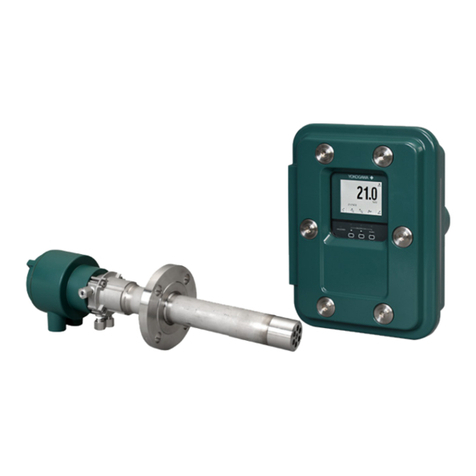
2IM 77M02B01-01EN 3rd Edition Apr. 01, 2022-00
1.3 Terminal Arrangement
Protect-side
terminal
Surge-side
terminal
A
B
C
1
2
3
+
í
Not Connected
+
í
Not Connected
Grounding
terminal
A
C
B
12
3
1.4 Wiring
NOTE
Use of arresters ignoring the specifications may cause
electric shock, overheating or damage.
1. Input signal value applied to the arrester should
meet the required specifications.
2. The external wiring to the terminals and wiring to
ground are as specifications.
Flexible twisted wire and durable round crimp-on terminal (JIS C
2805) are recommended to use.
(1) Signal cable
Nominal cross-sectional area of conductor: 0.5 to 0.75 mm2.
Example of suitable cable: Vinyl code (VJF) (JIS C 3306) for
electronic instrument.
(2) Grounding cables
Nominal cross-sectional area of conductor: 2.0 mm2or more
for grounding.
Example of suitable cable: 600V vinyl insulated cable (IV)
(JIS C 3307), Vinyl insulated cable
(KIV) (JIS C 3316) for electronic
instrument
1.5 Grounding
NOTE
Wire tightening torque for arrester should not be 1.2
N•m or more.
(1)
Interconnect Grounding
(2)
Interconnect Grounding
(when using shield line)
Arrester
Instrument
Arrester
Instrument
Apply the grounding system which is
defined by the rules and standards
of the country or the region.
Short bar
(for grounding terminal connection)
Grounding for serial installation of
arresters is to connect grounding
terminals of neighboring arresters to
each other and touch ground at one
point from last arrester according.
Make sure to earth ground the ground terminal through minimum resistance.
2. CONNECTION OF ARRESTERS WITH
INSTRUMENTS TO BE PROTECTED
Distributor
Transmitter
AR-SA AR-SA
Lightning
Surge
A
+
íB
1
2
1
2
A
BGND
4-20 mA
Ground Terminal Ground Terminal
Protect side Protect side
Surge side
3. ENVIRONMENTAL CONDITIONS
Ambient temperature: −10 to +60°C
Relative humidity: 5 to 90% RH (No condensation)
Altitude at installation site: Max. 2000 m above sea level
Installation category based on IEC/EN61010-1: II, pollution
degree: 2 (see Note.)
NOTE
The “Installation Category” implies the regulation for
impulse withstand voltage. It is also called the
“Overvoltage category”.“ II ” applies to electrical
equipment.“Pollution level” describes the degree
to which a solid, liquid or gas which deteriorates
dielectric strength is adhering.“2” applies to a normal
indoor atmosphere.
4. MANTENABCE
4.1 Arrester Checking
The arrester main body and terminal base are connected by plug-
in. Circuit between surge side and protect side would not be open
even if the main body is removed from the socket on terminal
base by loosing main unit-fixing screw. To check the arrester
performance, remove the main body from the socket and check
it by using the AR2-CK (arrester checker: option). If the arrester
cannot be used because the main body is deteriorated or broken,
be sure to replace both the main body and the terminal block.
The terminal block may be damaged by receiving surges. The
replacement of only the main body may fail to meet its protection
performance level.
4.2 Arrester check period
To protect the instrument from damage by induced lightning, the
arrester should be checked periodically at least once a year. In
areas where lightning occurs frequently, check should be done
more often particularly after thunderstorms.
5. HARDWARE SPECIFICATION
Use 0 to 100 mA DC
(12 to 30 V DC signal line)
*
Maximum continuous
operating voltage (Uc)
Between lines 30 V DC
Between ground 50 V DC
Permissible current
leakage
Between lines 5 μA or less (at 30 V DC)
Between ground 10 μA or less (at 50 V DC)
Instrument side voltage
limit (10 kV, 1.2/50 μA)
Between lines 50 V or less
Between ground 250 V or less
*Voltage protection
level (Up)
Between lines 100 V or less
Between ground 350 V or less
*Impulse durability
(8/20 μA)
Category C1 500 A
Category C2 5000 A
Discharge starting
voltage
Between lines 35 V DC or more
Between ground 74 V DC or more
Series resistance 33 Ω±10%
*Rated current 100 mA DC
JIS compliant JIS C 5381-21 (Category: C1, C2)
*: Description compliant with JIS C 5381-21.
